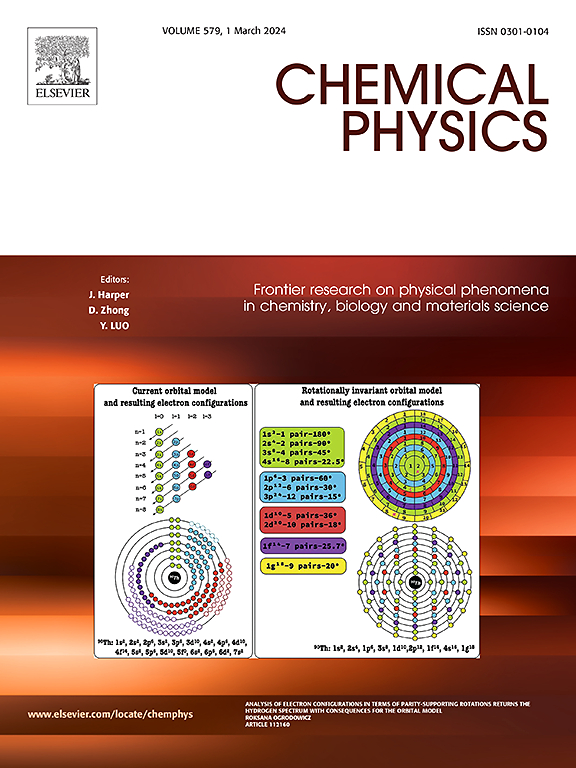DFT and AIMD study of 2D Li2O2: Stability, electronic, magnetic, thermal, and optical properties
IF 2
3区 化学
Q4 CHEMISTRY, PHYSICAL
引用次数: 0
Abstract
We employ density functional theory to examine the structural, stability, electronic, magnetic, thermal, and optical properties of two atomic configurations of lithium peroxide with hexagonal lattice and decorated hexagonal lattice identifying as LiO-1 and LiO-2, respectively, within the space group. Although part of the same crystallographic group, these two atomic configurations give rise to diverse physical properties. Examining the phonon band structure indicates that LiO-1 is dynamically unstable, whereas LiO-2 exhibits dynamic stability. The calculations of formation energy and ab-initio molecular dynamics simulations validate the energetic and thermal stability, respectively. Electronic structure computations using both GGA/PBE and HSE06 functional reveal that both structures are semiconductors, with LiO-2 displaying a broader band gap than LiO-1 due to less symmetry of LiO-2, and neither configuration exhibits magnetic ordering. Optical analyses indicate that both structures exhibit transparency in the visible spectrum with minimal optical conductivity. However, LiO-2 shows enhanced refractive indices and reflectivity in the ultraviolet range. Heat capacity trends indicate similar thermal characteristics, with LiO-2 demonstrating somewhat improved heat absorption at higher temperatures. The findings underscore the promise of both configurations, especially LiO-2, for energy storage and ultraviolet optoelectronic applications, providing significant insights for forthcoming investigations into two-dimensional materials.
二维Li2O2的DFT和AIMD研究:稳定性、电子、磁性、热学和光学性质
我们利用密度泛函理论研究了P63/mmc空间群中具有六方晶格和修饰六方晶格的过氧化锂的结构、稳定性、电子、磁性、热学和光学性质,它们分别被识别为Li2O2-1和Li2O2-2。虽然属于相同的晶体群,但这两种原子构型产生了不同的物理性质。对声子带结构的研究表明,Li2O2-1具有动态不稳定性,而Li2O2-2具有动态稳定性。地层能计算和从头算分子动力学模拟分别验证了其能量稳定性和热稳定性。使用GGA/PBE和HSE06函数进行的电子结构计算表明,这两种结构都是半导体结构,由于Li2O2-2的对称性较小,Li2O2-2比Li2O2-1具有更宽的带隙,并且两种结构都不具有磁有序性。光学分析表明,这两种结构在可见光谱中都具有最小的光导电性。而Li2O2-2在紫外波段的折射率和反射率均有增强。热容趋势表明了类似的热特性,Li2O2-2在较高温度下的吸热性能有所改善。这些发现强调了这两种结构,特别是Li2O2-2,在能量存储和紫外光电应用方面的前景,为即将到来的二维材料研究提供了重要的见解。
本文章由计算机程序翻译,如有差异,请以英文原文为准。
求助全文
约1分钟内获得全文
求助全文
来源期刊

Chemical Physics
化学-物理:原子、分子和化学物理
CiteScore
4.60
自引率
4.30%
发文量
278
审稿时长
39 days
期刊介绍:
Chemical Physics publishes experimental and theoretical papers on all aspects of chemical physics. In this journal, experiments are related to theory, and in turn theoretical papers are related to present or future experiments. Subjects covered include: spectroscopy and molecular structure, interacting systems, relaxation phenomena, biological systems, materials, fundamental problems in molecular reactivity, molecular quantum theory and statistical mechanics. Computational chemistry studies of routine character are not appropriate for this journal.
 求助内容:
求助内容: 应助结果提醒方式:
应助结果提醒方式:


